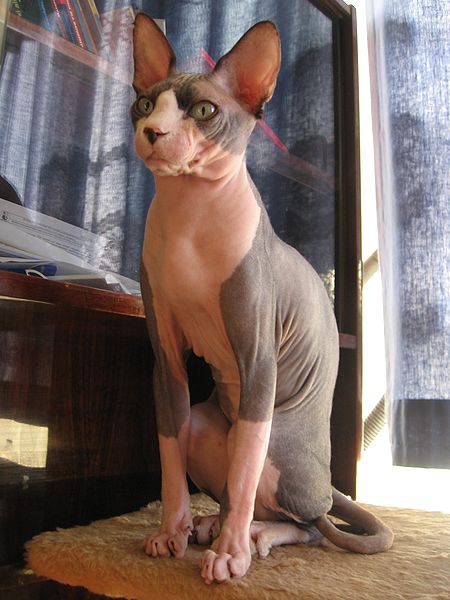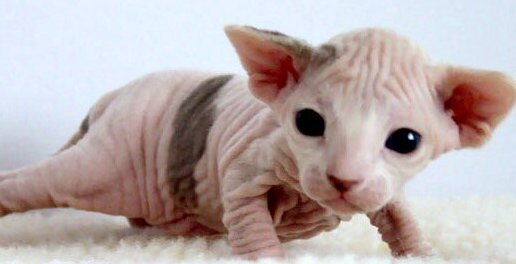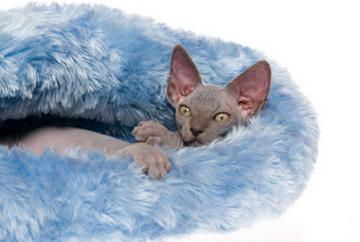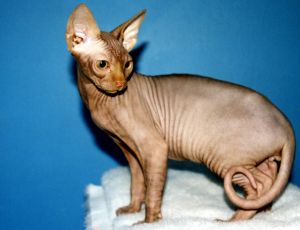The Sphynx Cat Breed
History
In 1966 a black and white cat gave birth to a hairless kitten in Ontario, Canada. This kitten was given the name of Prune and she was the foundation cat of the Sphynx cat breed.
Prune was bred to other cats in an attempt to create more hairless kittens. Some of the kittens that were born had hair whilst others were as hairless as their mother. This is due to the fact that the hairlessness is a recessive gene.
 Sphynx Cat photo by M. Minderhoud
Sphynx Cat photo by M. Minderhoud
The hairless kittens were called Canadian Hairless Cats whilst other people referred to them as Sphynx cats because of their similarity to the Egyptian cat sculpture.
Several natural mutations of hairless kittens were found in Toronto and Minnesota between 1975 and 1978. These kittens were bred to the Devon Rex, which is another cat breed that has almost no body hair.
The Sphynx cat breed has been recognized by TICA for more than 20 years and currently there are several thousand Sphynx cats registered world wide.
Description
The Sphynx is a medium sized and very muscular cat breed that comes in a variety of colors such as tabby, tortoiseshell, parti-color and solid. TICA recognizes all four the color categories – pointed, mink, sepia and traditional.
The other distinctive feature is their huge ears that can be more than 2 inches in height. The large, lemon-shaped eyes of the Sphynx further enhance its open expression.
Although the Sphynx cat breed is described as a hairless cat breed, it is not really hairless. The Sphynx has a very fine down that covers the skin and gives it the feeling and the appearance of suede. Fine hair is sometimes visible on the backs of the ears and the nose.
 Sphynx Kitten
Sphynx Kitten
Sphynx Cat Care

The Sphynx lacks an absorbent coat and their skin often gets oily, making it necessary for you to bath your Sphynx cat. During cooler periods and the winter season it is very important that you provide adequate shelter for these hairless cats as they do not have the fur coats necessary to protect them from the elements. Fur beds can be purchased at any pet supply store. It is also very important to use a veterinary sun block as the Sphynx can get sunburned easily.
Even though the Sphynx appears hairless, this does not mean that they are hypo-allergenic and will not cause any allergic reactions. The saliva of cats often contain the same protein that the dander does that is responsible for allergic reactions. Before getting a Sphynx, spend time with one to see if you are allergic or not.
Personality & Temperament

This unusual looking cat breed is highly intelligent, inquisitive and affectionate. You will often find the Sphynx snuggled under the blankets with you, not just for warmth, but also to be as close as possible to you. Sometimes dog-like in their loyalty, the Sphynx makes a loving companion.
Most Sphynx cats get along well with children and other pets and they love introducing themselves to your visitors.
This hairless cat breed does not have to be entertained the whole time, but will be perfectly content to play with a piece of crumpled paper for hours.







